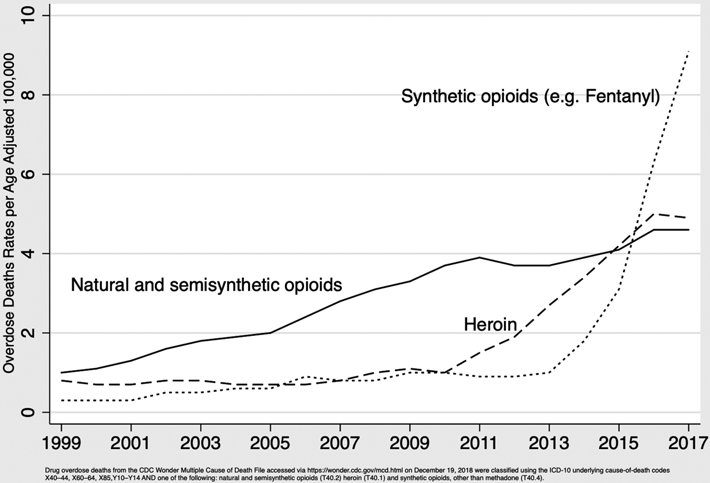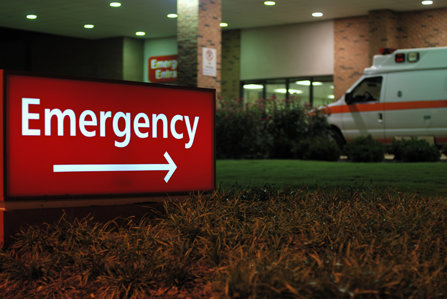Drug Addiction, A Growing Crisis in Urban America

Drug addiction has become so widespread, that it is now a serious problem for rural America as well as urban centers. In fact, during the first 15 years of the 21st-century, rural America saw unprecedented spikes in drug overdose fatalities. Some rural areas became so overrun by drug addiction that, compounded by lack of access to addiction treatment and emergency medical services, much of rural America experienced higher overdose rates per capita than urban areas.
This is now changing, but not for the better. Drug overdoses are continuing at high rates in rural America. They are not reducing, while at the same time, drug overdoses are increasing in urban areas. A recent CDC report shows that, just in the past four years, drug overdose deaths in cities have increased rapidly, now overtaking rural America in terms of per capita overdoses.
It would appear that one of the main reasons why overdose deaths have surged in urban regions is because of the introduction of illicit fentanyl and other synthetic opioids into cities, particularly as a replacement for heroin. And while correlation does not imply causation, this change in drug use trends is worth close inspection.
As drug use trends change and the types of drugs used become more deadly, community members, families, friends, coworkers, and public health leaders and policymakers have to push even harder for addicts to get into treatment as soon as possible.
What Is Fentanyl and Why Is it So Dangerous?
Pharmaceutical fentanyl is a synthetic opioid, an extremely potent drug approved for the treatment of severe pain. Fentanyl was originally intended to treat cancer pain and to help palliative care patients. Fentanyl is 50 to 100 times more potent than morphine and about ten times more potent than heroin. While fentanyl can be misused and abused by patients who have a legitimate prescription for it, the majority of recent spikes in fentanyl overdose are linked to illegally made fentanyl.

Drug trafficking organizations know how to make an illicit version of fentanyl. It is a chemical substance similar to pharmaceutical-grade fentanyl but produced in clandestine drug labs. This illegal fentanyl is the culprit behind tens of thousands of deaths in the last several years, including the recent surge in overdose deaths in American cities.
According to the CDC, fentanyl deaths increased by 16% from 2018 to 2019, with fatalities in 2019 being 12 times higher than in 2013. That’s a 1,200% increase in just six years. More than 36,000 people died from overdoses involving synthetic opioids in 2019, making it the most lethal drug in America.
Examining the Trend – The CDC’s Report on Urban and Rural Drug Overdose Deaths
In March 2021, the CDC released a National Center for Health Statistics data brief that put forth evidence of a concerning surge in drug overdose deaths in urban America. The highlights of the report are as follows:
- From 1999 through 2019, the rate of drug overdose deaths in urban counties across the U.S. increased from 6.4 per 100,000 to 22.0 per 100,000.
- From 1999 through 2019, the rate of drug overdose deaths in rural counties across the U.S. increased from 4.0 per 100,000 to 19.6 per 100,000.
- From 2016 to 2019, drug overdose death rates in urban communities overtook overdose death rates in rural counties (on a per capita basis). From 2006 to 2016, drug overdoses per capita were higher in rural counties than in urban counties.
- From 2015 to 2019, a surge of illicit fentanyl supply in American cities led to a devastating spike in fatal overdoses. In 2019, the rate of fatal overdoses involving fentanyl in urban counties came in at 11.9 deaths for every 100,000 residents. In rural counties in that same year, the rate of fatal overdoses involving fentanyl came in at 4.6 deaths for every 100,000 residents.

Dr. Holly Hedegaard and Dr. Merianne Rose Spencer, the authors of the data brief, summarized their findings by saying, “Rates for drug overdose deaths involving heroin or cocaine were consistently higher in urban than in rural counties over the entire period. Rates of drug overdose deaths involving synthetic opioids other than methadone (drugs such as fentanyl, fentanyl analogs, and tramadol) were similar or slightly higher in rural than in urban counties through 2014. The pattern changed in 2015 through 2019, with higher rates seen in urban counties than in rural counties.”
There seems to be a pattern here. Wherever fentanyl use increases, whether it is in rural communities one year or urban communities the next year, overdose deaths increase. This is concerning for many reasons. For one, it could be surmised that overdose fatalities per capita should be lower in urban counties than in rural, given that addicts in such areas have better access to healthcare services, emergency medical care, and addiction treatment. But even with all of those factors at play, because fentanyl is so potent, so addictive, and so much stronger than other opioids, it is very easy to overdose on it and to die from it.
Another Study Examines Surging Fentanyl Overdoses in Western Cities
The Centers for Disease Control and Prevention is not the only organization ringing the alarm bell over surging fentanyl overdose deaths in U.S. cities. The journal, Elsevier Public Health Emergency Collection, published a report in September 2020 that highlighted surges in fentanyl overdoses in urban counties west of the Mississippi.
That report found that in Denver County, CO; Harris County, TX; King County, WA; Los Angeles County, CA; and Dallas-Fort Worth, TX, mortality rates from synthetic opioids like fentanyl increased 371% from 2017 to 2019. Furthermore, that report also confirmed CDC data showing that fentanyl is also showing up in other drug supplies such as heroin, stimulants, and prescription pills.
Drug Addiction Treatment – Breaking Free from Drugs in Urban and Rural America
Whether one lives in an urban or a rural area, an addiction to fentanyl puts one’s life in danger every day. Fentanyl kills. It is much more potent than heroin or prescription opioid pain relievers. And yet, addicts often take fentanyl like they would heroin or painkillers. Their bodies are quickly overwhelmed by the drug, they go into an overdose, and they die.
Dangerous and deadly when misused, fentanyl is also extremely difficult for one to stop using once they’ve begun. That’s why it is so important for fentanyl addicts to get help through treatment and for their family members and loved ones to help them find treatment.
Sources:
- https://www.cdc.gov/drugoverdose/opioids/fentanyl.html
- https://www.cdc.gov/nchs/products/databriefs/db403.htm
- https://www.ncbi.nlm.nih.gov/pmc/articles/PMC7521591/


 ®
®